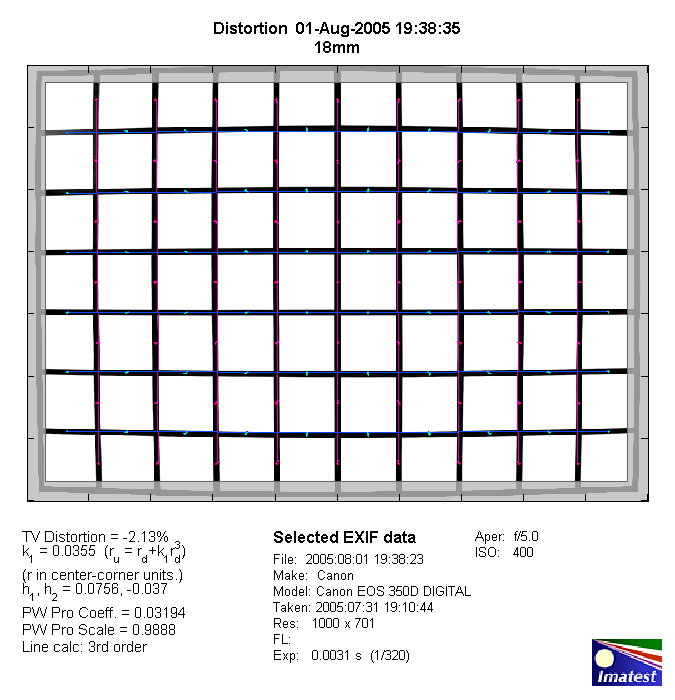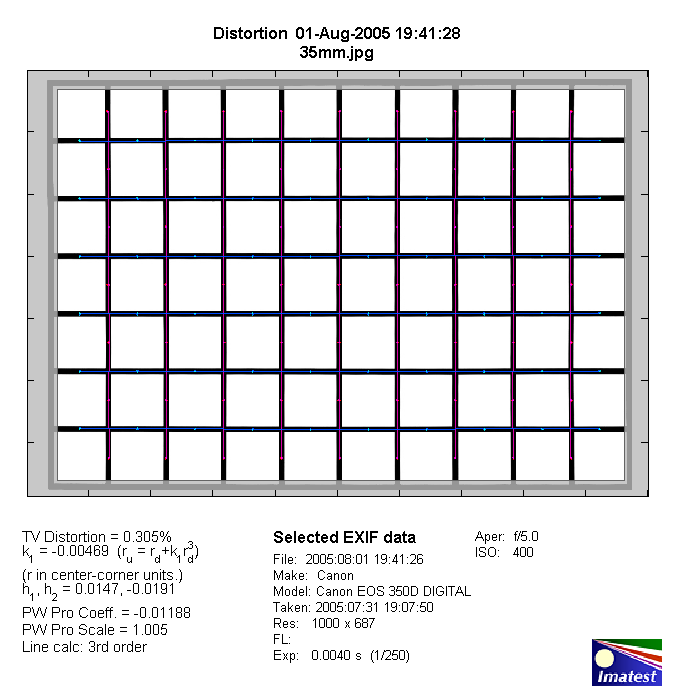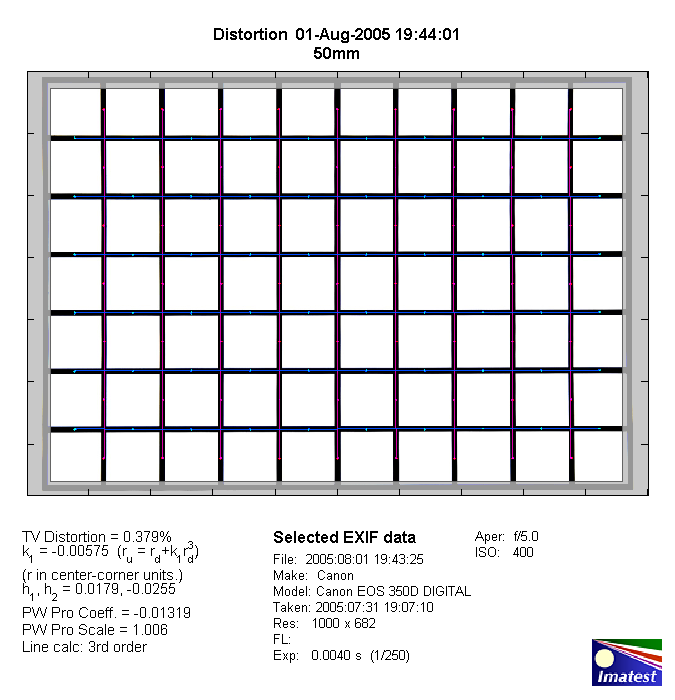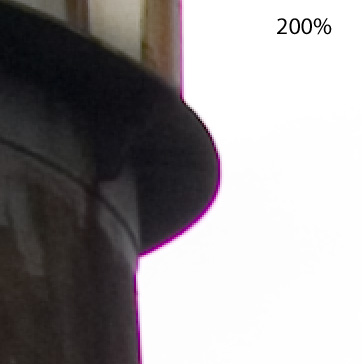|
Sigma AF 18-50mm f/2.8 EX DC Aspherical IF - Review / Test Report - Analysis |
|
Lens Reviews -
Canon EOS (APS-C)
|
|
Page 2 of 3
Distortion
At 18mm there's a pronounced degree of barrel distortion easily noticeable as soon
as you've straight lines close to the image borders. At 35mm and 50mm the problem is negligible.



Vignetting
Vignetting is relatively well controlled for an APS-C lens. At f/2.8 vignetting will be
noticeable in critical scenes peaking around 0.8EV. However, from f/4 & up the issue is no longer field relevant.

MTF (resolution & chromatic aberrations)
Update (10/2/2005): several people were raving about this lens based on this review by referring
to the test charts but without reading the notes in the text here. Therefore I updated the chart @ 18mm
in order to show the extreme corner performance which isn't quite as good as many people stated in
various discussions.
In terms of resolution the lens performed very good in the lab ... with one exception.
The center performance is exceptionally high at all focal lengths straight from the max. aperture.
The corner performance (~70% off the center) is also generally very impressive EXCEPT at 18mm where the
very extreme corners (~90% off the center) are soft. This rather drastic decrease in quality in not
present with full frame lenses on APS-C DSLRs because of taking advantage of the sweet spot here.
From f/5.6 & up the extreme corners are very usable at 18mm.
The problem is not present at the other tested focal lengths.
Please note that the MTF results are not directly comparable across the different systems!
Below is a simplified summary of the formal findings. The chart shows line widths per picture height (LW/PH) which can be taken as a measure for sharpness.
If you want to know more about the MTF50 figures you may check out the corresponding Imatest Explanations
Chromatic Aberrations
This is clearly the weakest characteristic of the AF 18-50mm f/2.8EX - CAs (red/blue color shadows at harsh
contrast transitions) are very high peaking in an average pixel width beyond 2 pixels @ 18mm.
However, they're also quite strong occurrences throughout the rest of the range. CAs are quite easily correctable
(e.g. via Raw Shooter Essentials or Photoshop ACR) but if you prefer straight JPEGs or don't want to bother
with post-processing the issue will be quite noticeable in some scenes. Have a look at the enlarged sample
portion (200%) to the RIGHT below.
It should also be mentioned that the lens exhibits also a fairly severe degree of purple fringing
at large aperture settings which cannot be completely reduced during post processing. Unlike "normal"
CAs purple fringing resembles diffuse halos which pollute into darker areas (see the image to the LEFT below).
Stopping down helps to reduce fringing.
| Purple fringing at f/2.8 | Chromatic Aberrations |
 |  |
Other Characteristics
Due to the rather short focal length at the tele end you will usually need to choose very close
focus distances in order to create a fair degree back- and foreground blurr. In this case the
resulting bokeh is generally quite pleasing with this lens.
Contra-light is quite well controlled but you will experience some loss of contrast and a few ghostings
in extreme situations. Sigma seems to have improved its coating quite a bit over the last decade here.
|